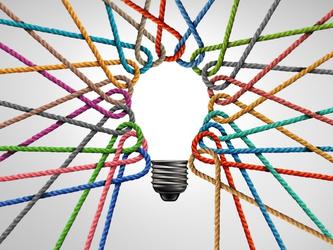How to be inclusive beyond Pride month
It’s June, it’s Pride month – I’d say that can only mean one thing, but actually, it means a lot of things.
It means that companies plaster rainbows all over their logos. There are a number of viewpoints on whether or not this is a good thing; for me, if the company stands by the LGBTQ+ community the other 11 months of the year too, it’s a good thing. There are many, many occasions where this isn’t true – but for once, I’m not out for a rant.
The main thing that Pride month means, in my eyes, is an increased awareness and acceptance of the LGBTQ+ community. I love Pride. Yes, I love the parades, the streamers, the dancing, the hugs, the drinking (!). But more than that, I love that people open up. People ask me questions they may not have asked otherwise, and I’d always rather people asked questions – it means we’re increasing our knowledge and understanding, improving empathy, and ultimately normalising LGBTQ+ lifestyles.
As ever, I’m not for one minute claiming to be an expert. Yes, my wife and I have been together for 10 years, and I’ve always been “one of those loud ones who fights for everything”. Yet I’m still constantly learning myself, and I won’t ever apologise for that. The world is changing, people are changing, identities are changing. We need to change and adapt with them.
With learning at the forefront of this piece, and apologies to anyone who may feel like I’m teaching them how to suck eggs, I thought it may be helpful to share some tips on how to conduct more inclusive research. Of course, I can’t cover everything here – firstly because I don’t have the space, and secondly because I just don’t know everything (don’t tell my wife that though).
Some quick hints and tips:
- Avoid setting hard quotas on gender, particularly if it means you need to screen out. Allow for more options than only ‘male’ and ‘female’, such as ‘non-binary’, ‘prefer not to say’, and ‘other’ as a minimum
- Please, please, please – don’t use gender stereotypical images/colours… i.e. an icon of a pink girl for female, and a blue boy for male
- Be particularly careful when talking about health, the body, etc. Remember, for example, not all women have female body parts, and vice versa – we shouldn’t exclude these people from our sample
- Read through questionnaires, screeners, discussion guides, etc and double-check your language is inclusive. Are you accidentally assuming gender, sexuality, lifestyle choices, or anything else? For example, one not LGBTQ+ related – the widely used term ‘pre-family’ assumes that person wants, or doesn’t currently have a family. Hands up who has a pet who is more like family than anyone else!
- Try not to assume people’s pronouns, whether it’s clients, respondents, colleagues, anyone. Don’t be afraid to ask! An easy way is to include pronouns in the usual ‘round table’ of introductions. “Hi, I’m Bethan, my pronouns are she/her, I’m an analytics director at Boxclever, and I’ll be responsible for the geeky maths parts of this project”. It’s that easy!
- Don’t be afraid to challenge clients on using inclusive language, screening, etc. – if you explain why, they’ll more than likely come around to the idea. I’ve also been told many a time in the past that clients respect it when they are challenged, too – it shows you’re on the ball.
The biggest tip I can give you, by far, is to never be afraid to ask. I know it can seem intimidating, and people can be nervous about getting it wrong – understandably, if you’re trying to do the right thing, the last thing you want to do is upset or offend anyone. More often than not, that person will appreciate you considering these things, and will be more than happy to explain their point of view to you.
With that, I’ll step off my soap box, and over to the kettle – there’s a brew and some rainbow biscuits that need my attention.
Bethan Blakeley is analytics director at Boxclever

We hope you enjoyed this article.
Research Live is published by MRS.
The Market Research Society (MRS) exists to promote and protect the research sector, showcasing how research delivers impact for businesses and government.
Members of MRS enjoy many benefits including tailoured policy guidance, discounts on training and conferences, and access to member-only content.
For example, there's an archive of winning case studies from over a decade of MRS Awards.
Find out more about the benefits of joining MRS here.













0 Comments